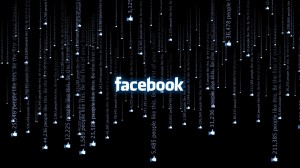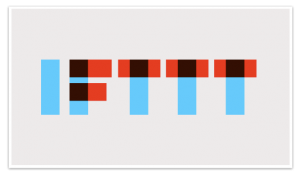Being network literate in the 21st century is something that can set you aside from your competitors as it is a vital component of the media and creative industry that is often over looked. Network literacy can be defined as knowledge and skills linked to computer and information literacy required for users to participate in the networked society that we have developed in the 21st century (Brendan Devlin 1997). The implications of network are vast and significant as they effect anyone who taps into the online network that has been established. For someone such as myself who intends to go into the film industry, having this in-depth understanding of network literacy and how it can put to use in the digital world is extremely advantageous and can be the difference between being picked up for a job by an employer or having my online profile overlooked or not even discovered at all.
I am a member of generation Y often called the net generation and within this a new theory has emerged, digital native. Digital natives are those born after 1980 and for most of their lives have been exposed a vast array of technologies and been networked from an early age (Charleson & Lyall 2014). It is very important to identify that in the current generation there exists two types of network literate individuals. There are those who are brought up with an innate understanding of technology and it is very much a social interaction, the likes of Facebook, Twitter and other social media sites but they have little to no understanding of what it means to actually be network literate. Most members of the current university course at the beginning would not have been able to define network literacy. Some still can’t. However there are those who are able to craft a piece of writing, use appropriate language and create an argument in an essay format to be used online and in the world of the internet (Charleson & Lyall 2014).
A great example of this is the expansion and integration of the blogging formula online. Many websites have taken to this blog like structure both in their layouts and style of writing. It appeals to the modern age and goes hand in hand with social media, more often than not the Facebook pages receive greater views than the actual company websites. This is because of the ease and custom design that Facebook allows, with the ability to like pages and subscribe. The Mind Unleashed page demonstrates all these qualities, hooking in readers through their news feeds which they scroll through daily. (Welsh & Wright 2010)
This is but one aspect of network literacy, but what does it mean for someone like me, a film maker wanting to break into the industry. A solid understanding of network literacy allows me to be an effective user, which entails be up-to-date with media platforms and how they impact society. Take for example the image below.
This was a photo I took while I was working at my old school. I loved the image and wanted to use this image to boost my sites popularity. By posting the image to Facebook at an appropriate time, around 8pm when most users are online and linking it through all my social media and websites (Tumblr, Flickr, Instagram etc) I was able to get over 2000 hits in one night on this image (which is big for me…). My understanding of the network, how it functions but more so, how and when people engage with it gave me the best chance to link this image and all its fellow apps back to my website.
This brings me to the topic of viral videos. Viral videos essentially stem from a different approach to engage consumers. The minifilm or microfilm has proven to be a great move audiences and viewers engaging more than one sense to experience the product, holiday or adventure with just the click of a button (TSAI & HSIANG-MING 2014).
The social extravagant of this is the Vine video lasting only 7 seconds. I don’t want to discuss vines too much other than they are a good tooling for teaching editing skills, what is need in a sequence and what is not. In terms of viral videos however, your online profile and the following or subscribed community that you have determines your impact on the internet.
Literally just 52 minutes ago the new Avengers Age Of Ultron trailer was released and the internet is going crazy. Almost instinctively I jumped on a trailer reviewing website, they had not made a video yet but one can assume they are doing it as we speak. Not on that but on the Facebook page hundreds of people were posting the trailer. The owner of this page is literally having his work done for him because he is so popular. This is clearly the high end of the spectrum but there are certain trends the online world focuses on such as regular uploads, film length and content to keep viewers coming back week after week.
Another example is an Australian example from Bendigo. Ben Blenner uploaded a video one month ago of his trip to Europe and around Iceland. The video now has over 17 thousands views which for a casual film maker from Bendigo is a pretty big deal. Ben has now been picked up by travel companies and Contiki tours around Europe to use footage and contracted to make more videos. Ben clearly has a good understanding of network literacy. His video has been embedded by himself and others on over 20 different sites and applications. The small act of sharing media has enabled Ben to get a job and film making career. This importance placed on sharing video content through social networks I too place a high value on. If there is one thing that can be learnt from network literacy it is that your understanding of the complex system allows you to direct media traffic and take advantage of the large audience. Not only is sharing your own content vital but it allows you to explore other forms of media, to gain inspiration and to learn how to critically analyse other pieces of work. As a film maker feedback is essential, both giving and receiving making the works not only relevant but ‘real’. (Charleson & Lyall 2014).
As I stated before our online profile is everything. The media we consume, that we distribute, that we view, everything. With a vast array of applications and technologies it is easier than ever to be sharing information and to be interconnected. The site IFTTT is a great example of this. It allows for certain tags and command to links all of your social media, so when you post on Facebook for example, it posts a photo directly to your instagram. For bloggers this is a great way to share and link information all back to a central hub being the blog page itself. This also effects what we put on each page. If a family member or business associate stumbles onto one of your pages they will almost certainly find the others. So there are both pros and cons. We can interlink everything to get the views on all our sites to rise but it could also result in an old page being linked they we no longer want or have forgotten about. This ability to be network literate not only dictates our online presence but the types of media we are involved in and that we upload to our servers. For an artist working in both photography and video, having a large online presence can be hugely beneficial as both sites can be linked, and those linked to other pages such as Facebook and Instagram. As your online presence grows you will undoubtedly grow in your knowledge of network literacy (Brendan Devlin 1997)
Like anything, being network literate takes practise, it is almost like exercise. If you begin to slacken with your application of knowing and doing then you will fall out of the loop and while the networks of our world are changing and evolving you will be left behind. More and more people are realising how much they can get out of the internet and by networking and how informative it can be. Below are two links, one to an article a friend of mine posted and another to a friends blog. Both have received praise just for uploading their thoughts to the internet and they continue to do so. Being network literate is also about where we are going. For those of us who can predict where the system is evolving to can truly capitalise on this knowledge. The system of vlogging like the movie reviews link below has become so popular that companies are suing internet groups and individuals for bad mouthing films, games and other sources of media because they are taken so seriously as well as the issues of copyright in relations to showing clips in their reviews.
What will be the next big step for network literacy? Personally I think that the idea of being connected is going to extend on further, with the release of the iWatch I think we will see many more devices like this to come and soon we will be part cyborg, processing and communicating information at all times. In our lifetime? Quite possibily, the idea of ID microchips planted beneath the skin is already being tossed about. But that is another topic for another essay. I hope you enjoyed reading it.
Flash.
Word Count: 1609
Cite List:
Charleson, D & Lyall, M 2014, The New Communication: Using new and social media as a basis for instruction and assessment in higher education No. 75, viewed Oct 15th
Welsh T.S & Wright M.S. 2010 Information Literacy in the Digital Age, viewed Oct 16th
Devlin, B 1997,Conceptual models for network literacy, The Electronic Library, Vol. 15 Iss 5, viewed Oct 16th
TSAI, C, & HSIANG-MING, L 2014, Why Do We Share? The Impact of Viral Videos Dramatized to Sell, Journal Of Advertising Research, 54, 3, pp. 292-303, Communication & Mass Media Complete, viewed 22 October 2014.a







